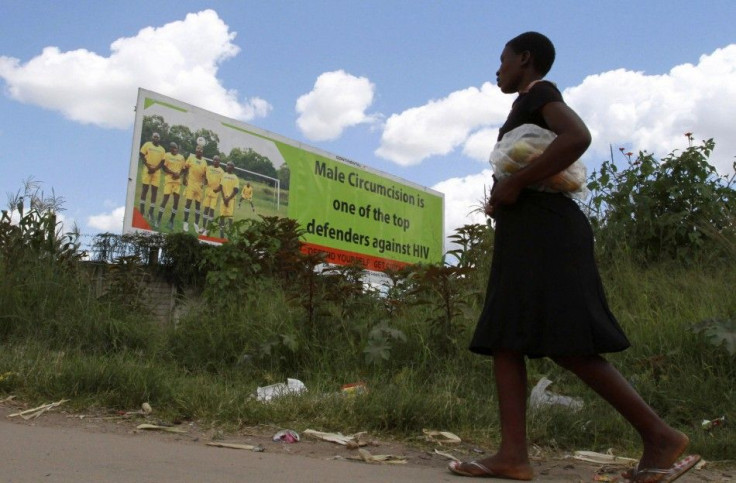PEPFAR: US HIV Aid Prevented 741,000 Deaths [STUDY]

NEW YORK (Reuters Health) - The United States foreign aid program that sends billions of dollars to African countries for HIV treatment and prevention has cut the number of people dying for any reason in those nations, a new study suggests.
Researchers had previously shown that the initiative -- the U.S. President's Emergency Plan for AIDS Relief, or PEPFAR -- had prevented deaths from AIDS. But it was unclear if more people in those countries were only dying of tuberculosis or malaria instead, researchers explained.
According to the new findings, about 741,000 deaths were averted in 2004 through 2008 in the 12 African countries with PEPFAR programs, such as Ethiopia, Kenya and Uganda.
There were concerns that there's been this shift in physicians and nurses (toward HIV clinics) to the detriment of other public health concerns, said lead researcher Dr. Eran Bendavid, an infectious diseases specialist from Stanford University in California.
But, he said, We can't find evidence of unintended harms -- or benefits. More or less we find that PEPFAR seems to have been very effective at reducing deaths, probably mostly HIV-specific deaths.
There's still some question as to whether or not the billions of dollars the U.S. puts toward the program has been worth those benefits, however.
PEPFAR, created by President George W. Bush in 2003, promotes HIV prevention, screening and modern treatment by building local health care facilities, training workers and making sure countries have reliable ways to get AIDS drugs. Non-governmental organizations and universities do the work with U.S. grants and incentives.
Data for the new study came from surveys done with adult women in 27 African countries, including nine with PEPFAR programs.
Women were asked about their adult siblings and recent deaths in their families. The researchers used that information to calculate approximately how many adults in each country were dying every year, for any reason.
In 2003, Bendavid and his colleagues found that between eight and nine out of every 1,000 adults died, both in PEPFAR and non-PEPFAR nations. Countries in the new report that weren't part of the program included Madagascar, Liberia, Senegal and Zimbabwe.
Five years later, death rates had dropped to four per 1,000 in PEPFAR countries and declined more modestly to seven out of every 1,000 without the program.
That worked out to a 16 percent lower chance of death in countries with PEPFAR between 2004 and 2008, once other factors such as a country's overall HIV rate and wealth were taken into account, the researchers reported Tuesday in the Journal of the American Medical Association.
CLOSE TO PREVIOUS FIGURES
The 741,000 deaths from any cause prevented is not too far off from previous estimates on the number of HIV-related deaths averted with PEPFAR -- so it's unclear if the program has had an effect on other diseases as well, the researchers said.
The really striking decrease in mortality in the PEPFAR program countries is a strong validation for me of the years of U.S. investment, and the sweat and toil of the clinicians, public health specialists and other staff who carried out this work, said Dr. Charles Holmes, the chief medical officer at PEPFAR and one of the study's authors.
Between 2003 and 2008, more than $20 billion was spent on PEPFAR, accounting for about three-quarters of total U.S. global health aid during that time, according to a commentary published with the study.
Although the new finding is obviously welcome news, said Dr. Ezekiel Emanuel, a medical ethicist from the University of Pennsylvania in Philadelphia, it doesn't answer the question of whether that much funding has been worth the gains, given where else that aid could have gone.
No one thinks that HIV/AIDS represents 75 percent of the health burden in developing countries, Emanuel, the commentary author, told Reuters Health.
Instead, the top killers in many countries are pneumonia and diarrhea in young kids, he said -- and prevention efforts tend to be a good deal for those causes.
Emanuel said determining how to properly dole out limited funding for those and other diseases, including tuberculosis and malaria, will be an important task for policymakers. And that might mean taking some money out of HIV treatment and prevention in the future.
No one says that HIV (funding) isn't making a big difference, the question is whether other things would make an even bigger difference, Emanuel said.
You cannot escape the, 'How do we allocate the money?' question, when we don't have enough.
Bendavid agreed allocating aid dollars is a matter of continuing debate -- but said it has been hard to directly compare the cost-effectiveness and potential benefits of addressing different global health problems along with HIV.
One of the main concerns that people raise is whether such as large investment was worth it, he told Reuters Health.
That remains an open question.
SOURCE: bit.ly/JjFzqx Journal of the American Medical Association, online May 15, 2012.
© Copyright Thomson Reuters 2024. All rights reserved.





















